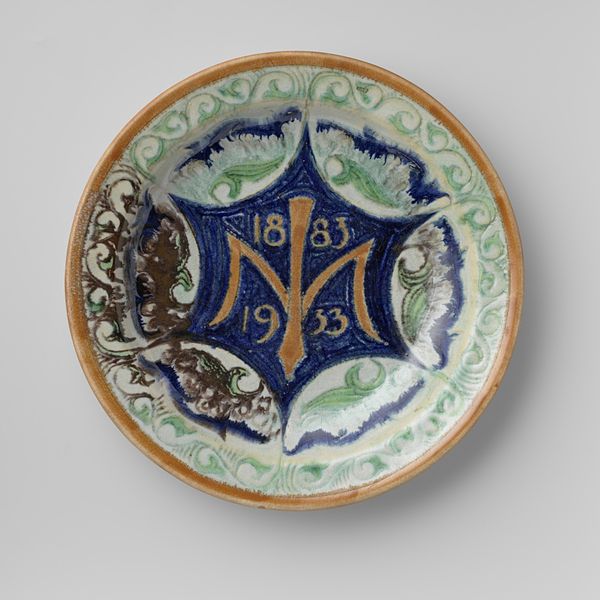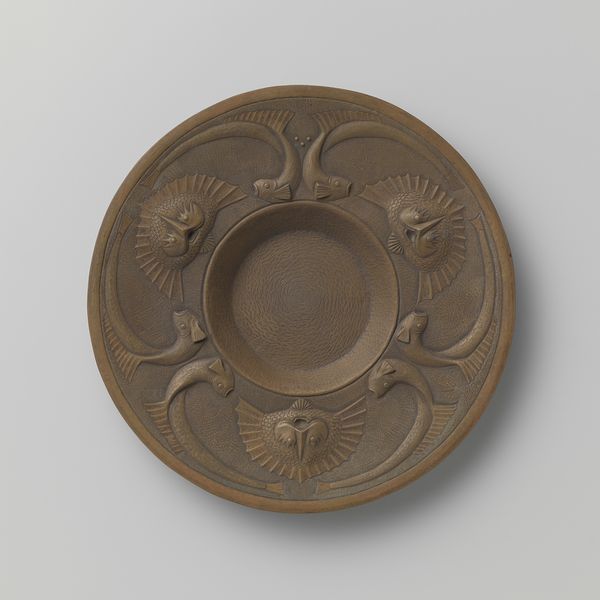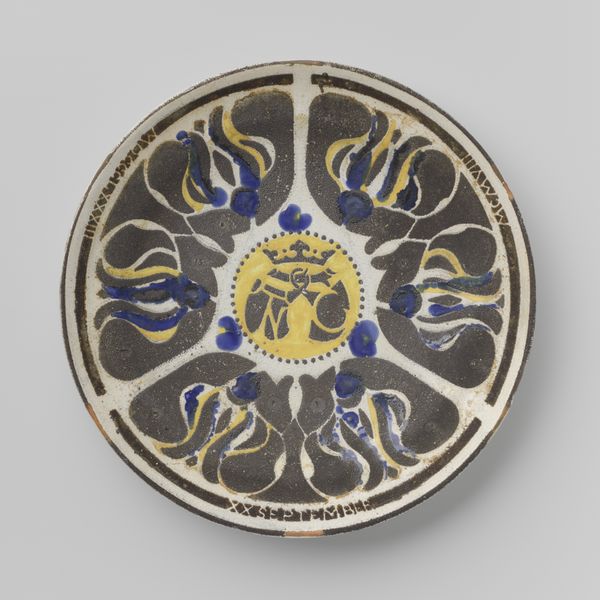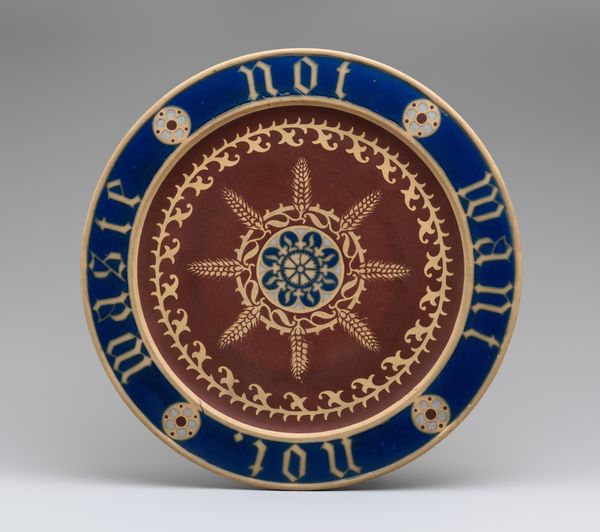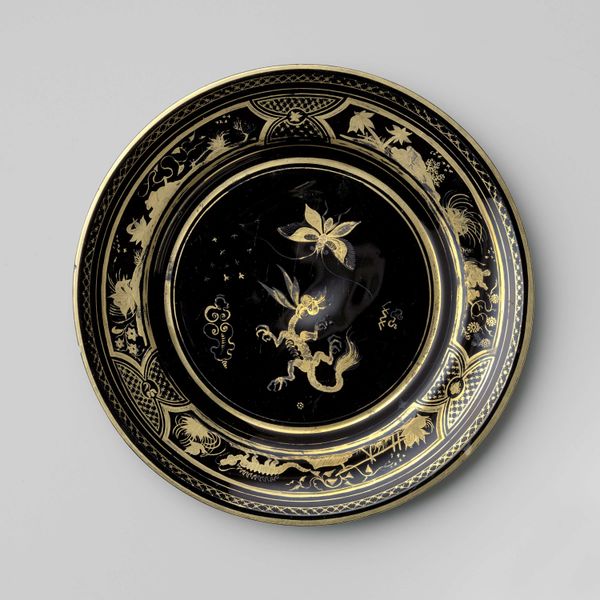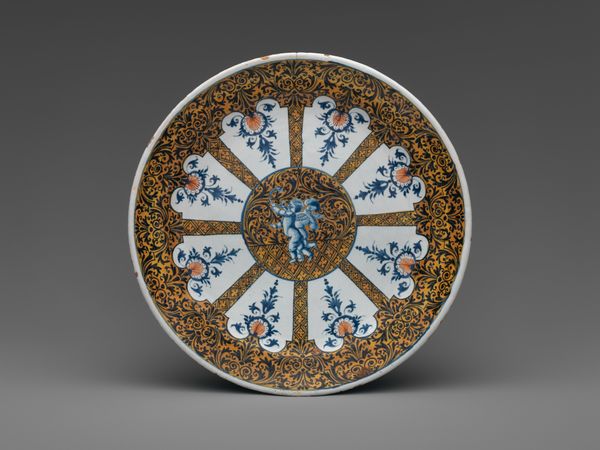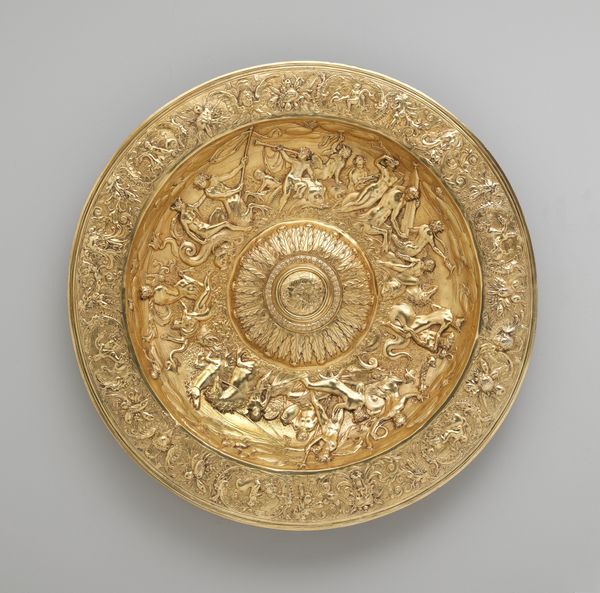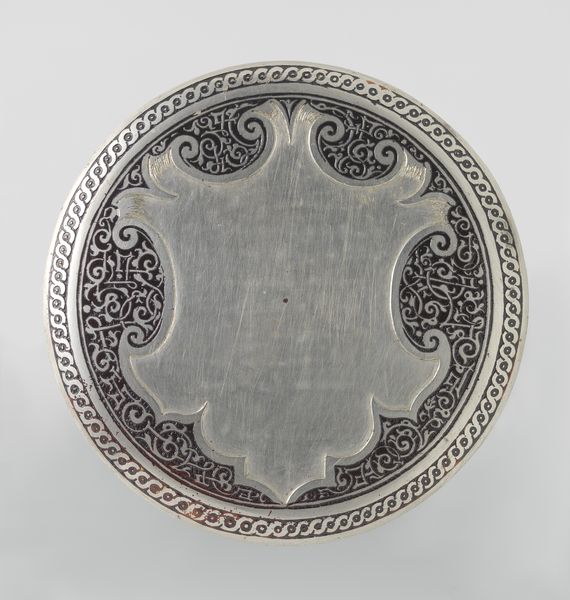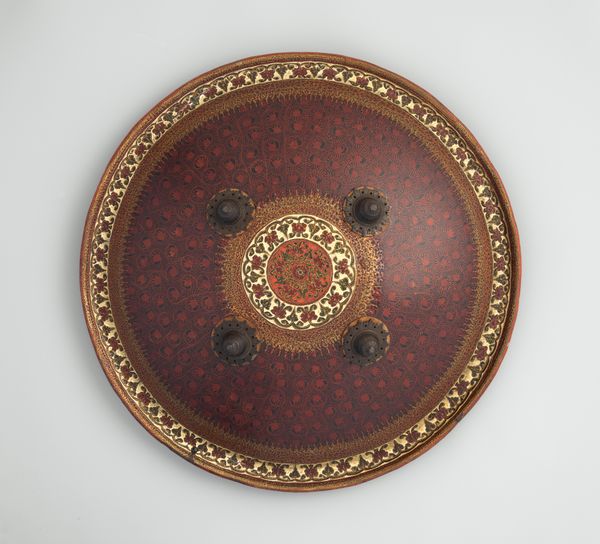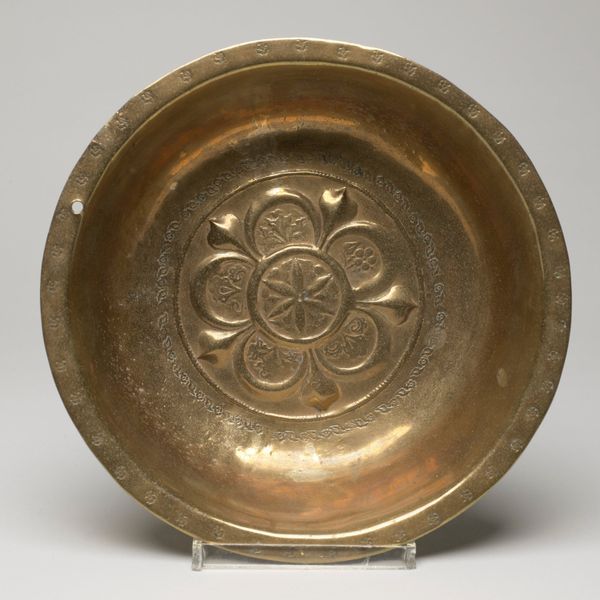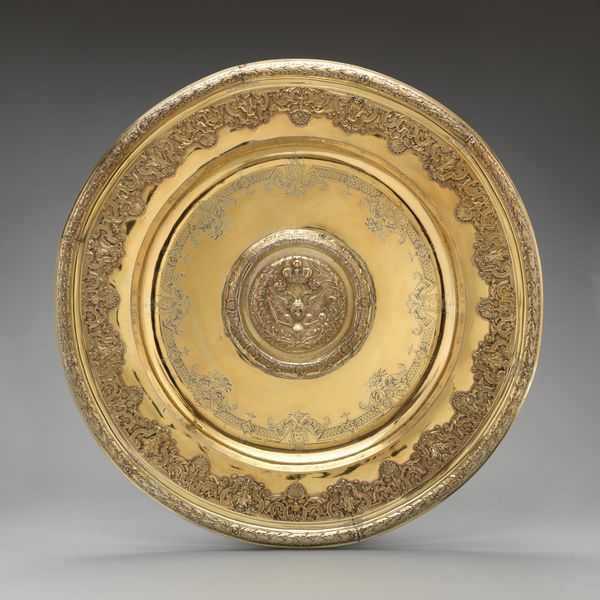
Wandbord ter gelegenheid van het 50-jarig huwelijksfeest J.R. Tutein Nolthenius en M.A. Cordes 1933
0:00
0:00
careladolphlioncachet
Rijksmuseum
Dimensions: height 4.3 cm, diameter 30.2 cm
Copyright: Rijks Museum: Open Domain
Curator: Immediately, what strikes me is the stillness—a kind of monumental calm emanating from this piece. Editor: This is "Wandbord ter gelegenheid van het 50-jarig huwelijksfeest J.R. Tutein Nolthenius en M.A. Cordes," created in 1933 by Carel Adolph Lion Cachet. It’s a mixed-media wall plate, combining metal and ceramic relief, here in the Rijksmuseum collection, celebrating a 50th wedding anniversary. So, definitely made for public display! Curator: Public, yet intimate. The warm metal tones offset by the cooler blues are very comforting. But more than that, I think it serves to mark the power of the institution of marriage. What do you make of the symbolic vocabulary deployed in this artwork? Editor: Right, let's deconstruct this symbolism! Look closely—we see a large, ornate monogram combining "N" and "C," referencing the couple's surnames perhaps. Above and below it are the years, 1883 and 1933. Surrounding the centerpiece is an Art Nouveau border that repeats images that appear like flora and birds or stylized feathers. It’s all contained in this plate, made, I think, to be seen—not necessarily understood in every detail, but felt. The weight and the solidity of the materials speak to the solidity of marriage in 1933 Netherlands. Curator: And given the rise of nationalism at the time, it would not be far-fetched to see this plate as part of a movement invested in marking and valuing the national unit, with a stress on family structures that reinforced it. It speaks of belonging to something beyond just a couple’s emotional union. Editor: Exactly! A celebration like this wasn’t just a private affair. The family would have been placed in the news and likely would have received a lot of well-wishes in the community, even from state officials. So, we can situate it within social practices. How do the work’s materials and construction shape your understanding? Curator: The pairing of ceramic and metal elevates the idea of marriage; metal is firm, resilient, a foundation, and ceramic with floral reliefs conveys a kind of tender appreciation and a cultivated beauty. In its materiality it is making an argument for lasting romance and societal relevance. Editor: Agreed. It's also intriguing how these seemingly humble materials transform when displayed. By making this a public work, he effectively canonized this couple in Dutch history, giving them a tangible, artful form. Curator: So, it becomes both intensely personal and widely accessible. A fascinating dichotomy to reflect on. Editor: Indeed! Thinking about it, that's also quite beautiful when considering love itself!
Comments
No comments
Be the first to comment and join the conversation on the ultimate creative platform.
